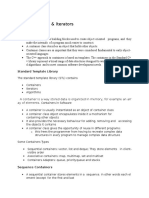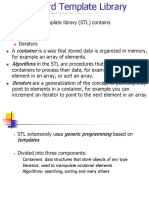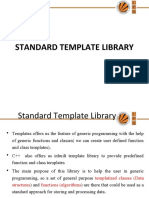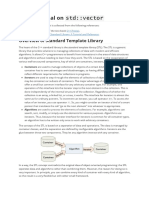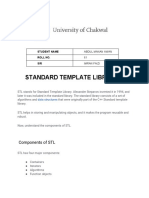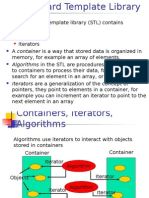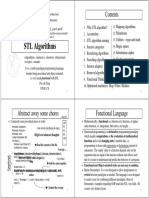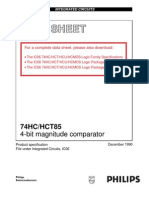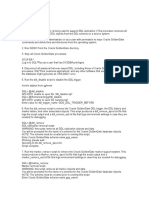0% found this document useful (0 votes)
88 views17 pagesC++ STL Video Notes
The document provides a comprehensive analysis of the C++ Standard Template Library (STL), emphasizing its architecture based on generic programming principles, which include containers, algorithms, and iterators. It details various STL components, such as foundational containers like std::vector and std::list, container adaptors like std::stack and std::queue, and associative containers like std::set and std::map, along with their performance characteristics. The report also highlights the importance of understanding time complexity and the distinctions between ordered and unordered containers for effective programming.
Uploaded by
RDx RonnieCopyright
© © All Rights Reserved
We take content rights seriously. If you suspect this is your content, claim it here.
Available Formats
Download as PDF, TXT or read online on Scribd
0% found this document useful (0 votes)
88 views17 pagesC++ STL Video Notes
The document provides a comprehensive analysis of the C++ Standard Template Library (STL), emphasizing its architecture based on generic programming principles, which include containers, algorithms, and iterators. It details various STL components, such as foundational containers like std::vector and std::list, container adaptors like std::stack and std::queue, and associative containers like std::set and std::map, along with their performance characteristics. The report also highlights the importance of understanding time complexity and the distinctions between ordered and unordered containers for effective programming.
Uploaded by
RDx RonnieCopyright
© © All Rights Reserved
We take content rights seriously. If you suspect this is your content, claim it here.
Available Formats
Download as PDF, TXT or read online on Scribd
/ 17






